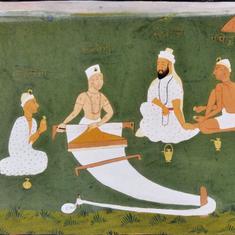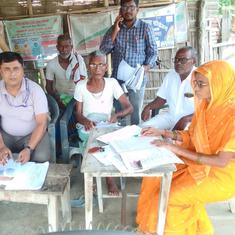Fine travel writing is rarely born out of a vacation, even an extended one. The lifestyle glossies are full of homogenous accounts of cherry blossom season in Japan or the faded glories of Tangier, but the good stuff often comes from novelists and writers for whom travel is not a holiday, but something woven into and inseparable from the fabric of their working lives.
The Austrian author Christoph Ransmayr, who writes in German, is one such novelist. His latest novel, The Flying Mountain, is in the news for being on the longlist for the £50,000 Man Booker International Prize for fiction translated into English. The story is about two Irish brothers and their attempt to climb the Phur-Ri, a mountain in the Kham region of Eastern Tibet. The entire book is in free verse, though Ransmayr prefers to call it “floating line” instead.
Reading about The Flying Mountain in the news, I was instantly reminded of a piece of writing about the same region by the same author. In it, over the course of a mere six pages, Ransmayr distils the essence of what in my mind will forever be Kham – camping by the light green waters of the Yilhun Lhatso and the metallic sounds of an elusive monk chiselling a Tibetan mantra on rocks surrounded by rustling conifers.
A merger of interior and exterior
A year ago, I had read this vignette, along with 69 others, in Ransmayr’s travel diary titled Atlas of an Anxious Man. These are impressionistic pieces, individually brilliant as shards of prose writing and collectively taking the tone of micro-histories of very specific times and places in Ransmayr’s long travelling life. If Calvino’s Invisible Cities was a collection of structural dreamscapes, then this is its earthly equivalent – not an escape from the world, but an often-arduous physical journey into it, for there are traces of life and revelation everywhere.
In a way, this is a portrait of the novelist as an active man. As Ransmayr hikes, swims, cycles, fishes, camps and drives through Europe, Asia and South America, he seeks and comes across people, animals, plants, buildings and myths that reveal something essential about the inner life of a place. In the pages of Atlas, it seems as if the writer’s interior and exterior lives have come together to exchange notes after their own expeditions.
In voice and material, Atlas is reminiscent of the work of the genre-defying German writer, WG Sebald. It could be that the cadences and internal rhythms of the German language lend themselves to the long, winding sentences – often punctuated by descriptions of the physical acts of the speaker or subject – that are typical of Atlas and all of Sebald. But, it is clear that there are also overlaps in topical obsessions: ruminating while on foot, the preponderance of history and myth, chasing the ghosts of personalities long dead and buried.
The vastness of details
While there is a marked lack of humour throughout, the book’s heaviness is in part due to the specificity of its descriptions of both the natural and material world. Ransmayr seems to know the properties of all kinds of herbs and star formations. He details the parts of a ship or a wooden barge as a sailor would. The overall effect is not one of being weighed down by inanities, but – as with Sebald – a sense of wonder at Ransmayr’s ability to label things with their proper names and yet manage to make a point about the vastness of the world as also the everyday dignities of the little things that constitute it.
Those who travel as part of – and not despite – their lives often have the strongest sense of home. Fittingly, some of the most touching pieces in the book are from the author’s home country. In one, he recreates an old man’s last living moments on a summer day in the village of Lambach in Upper Austria. Towards the end, he reveals the man to be his father.
Several other pieces have this compact Borgesian quality – they fold neatly over themselves as a form of final resolution. In writing of this sort, it becomes clear that no observation is throwaway. Yet, with the gentle forward flow of his narrative, Ransmayr manages to bewitch the reader into pushing an initial thought to the back of the mind.
The long pauses
On a jeep ride to the Yemeni port of Al Hudaydah, he initially wonders about the provenance of the fluttering cloths on the spindly trees that line the road. He is told by the driver that they are merely empty plastic bags. After narrating the central action of the vignette – involving a dead tiger shark – he wraps up, quite literally, by reintroducing the plastic bags. The reading experience also hangs on this sense of closure, because the scenes jump successively from Cambodian rivers to Jewish graveyards in Czechoslovakia to subterranean cisterns in Turkey.
The dead or dying animal is a recurring motif. The sceptre of mortality runs like an invisible thread through Atlas, and Ransmayr does not shy from personifying animals and plants in the moment of their struggle. He is a thoughtful and honest chronicler of the passing of things. Streams of living and dead salmon “bec[o]me wedged against each other”, a monitor lizard’s “black tongue dangle[s] out of the side if its mouth”, an injured anaconda “slither[s] onwards without its former, fluid grace.”
The translation by Simon Pare, who has also worked on The Flying Mountain, succeeds in rendering Ransmayr’s miniature paintings from German to English. For all its physicality and earthliness, so much of Atlas relies on mood and treatment. Presumably, that poses the ultimate challenge for the translator. Pare manages to deploy just the right words – what else does he have, what else does anyone have – that enable us to imbibe this personal atlas.
Unlike the regulation traveller, Ransmayr’s wanderings across the world are hardly slap-dash. They’ve taken place over the course of decades, with the traveller secure in the knowledge that only patient lingering brings forth stories. In Pare’s translation, it is possible to sense Ransmayr’s long pauses for breath and thought. The triumph of this literary cartography is as much the translator’s as it is the author’s.

Atlas of An Anxious Man, Christoph Ransmayr, translated by Simon Pare, Seagull Books.










